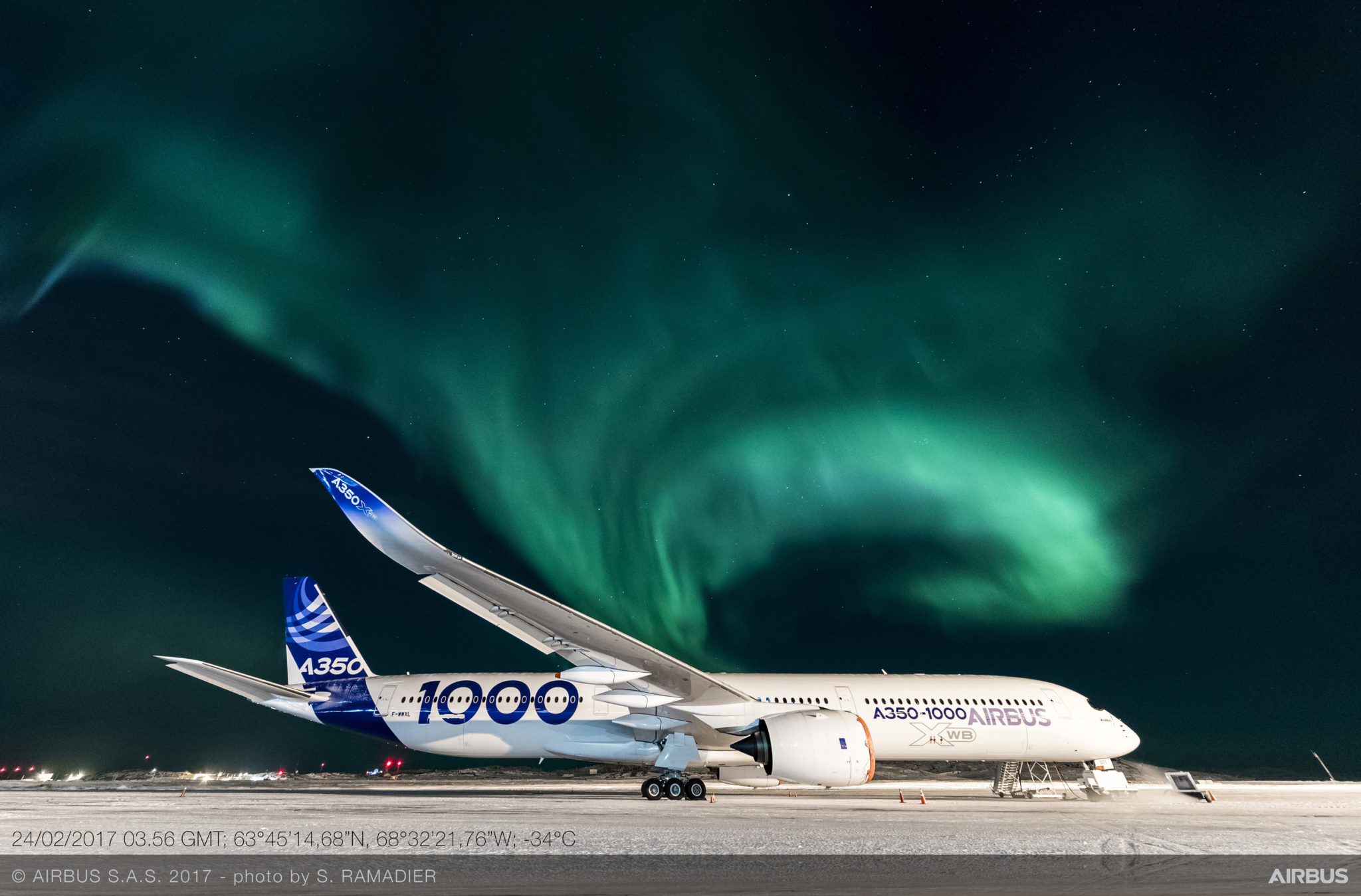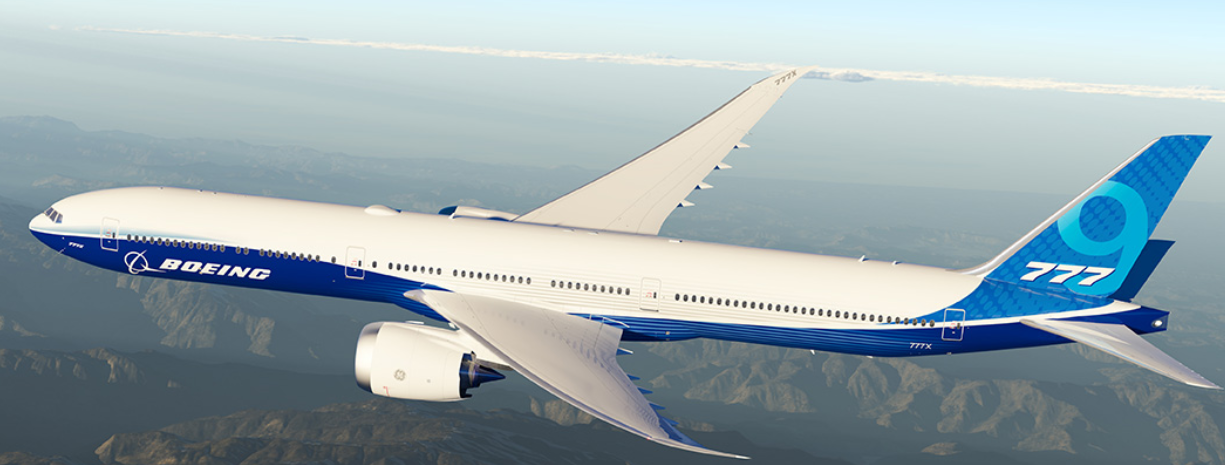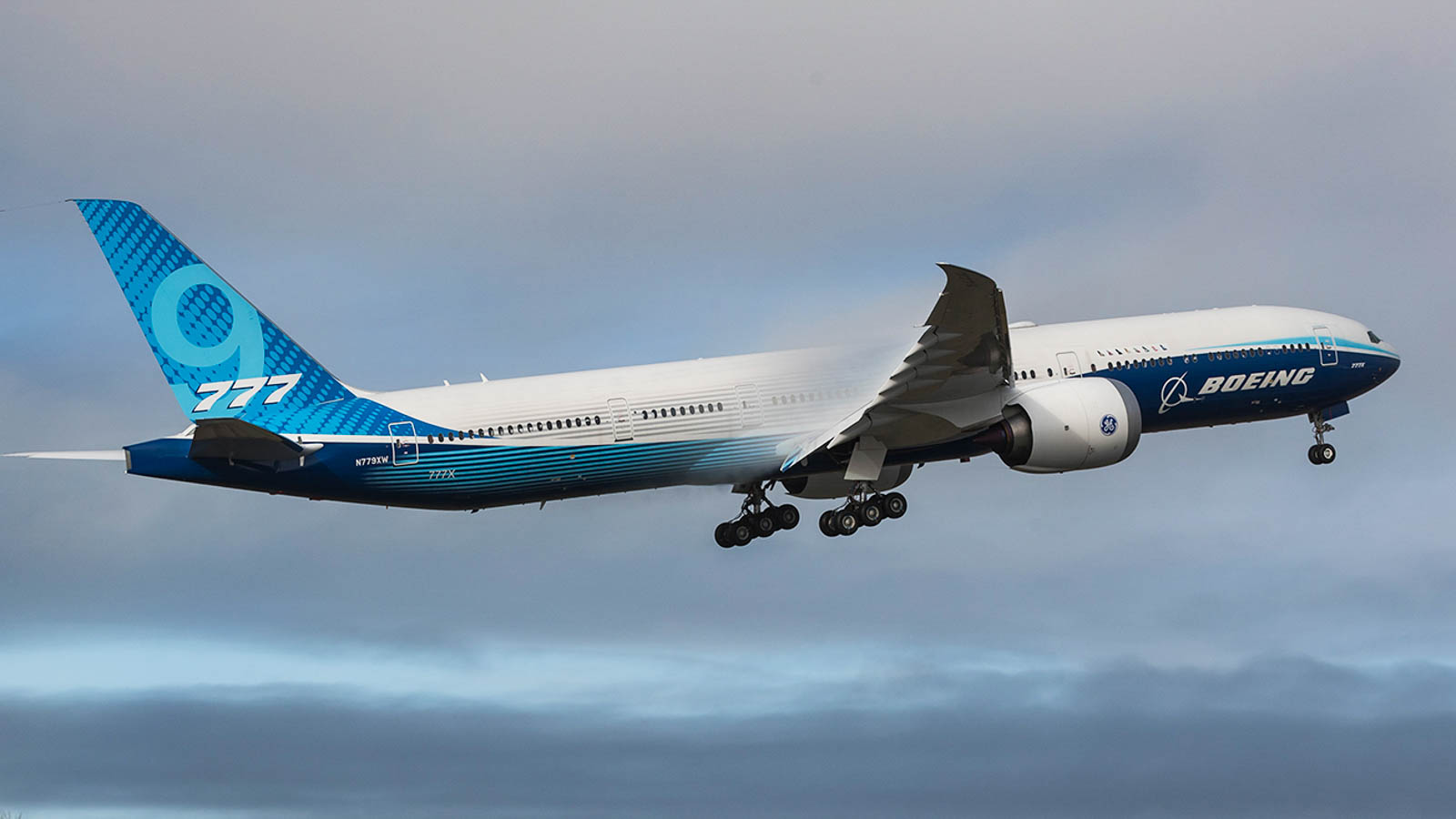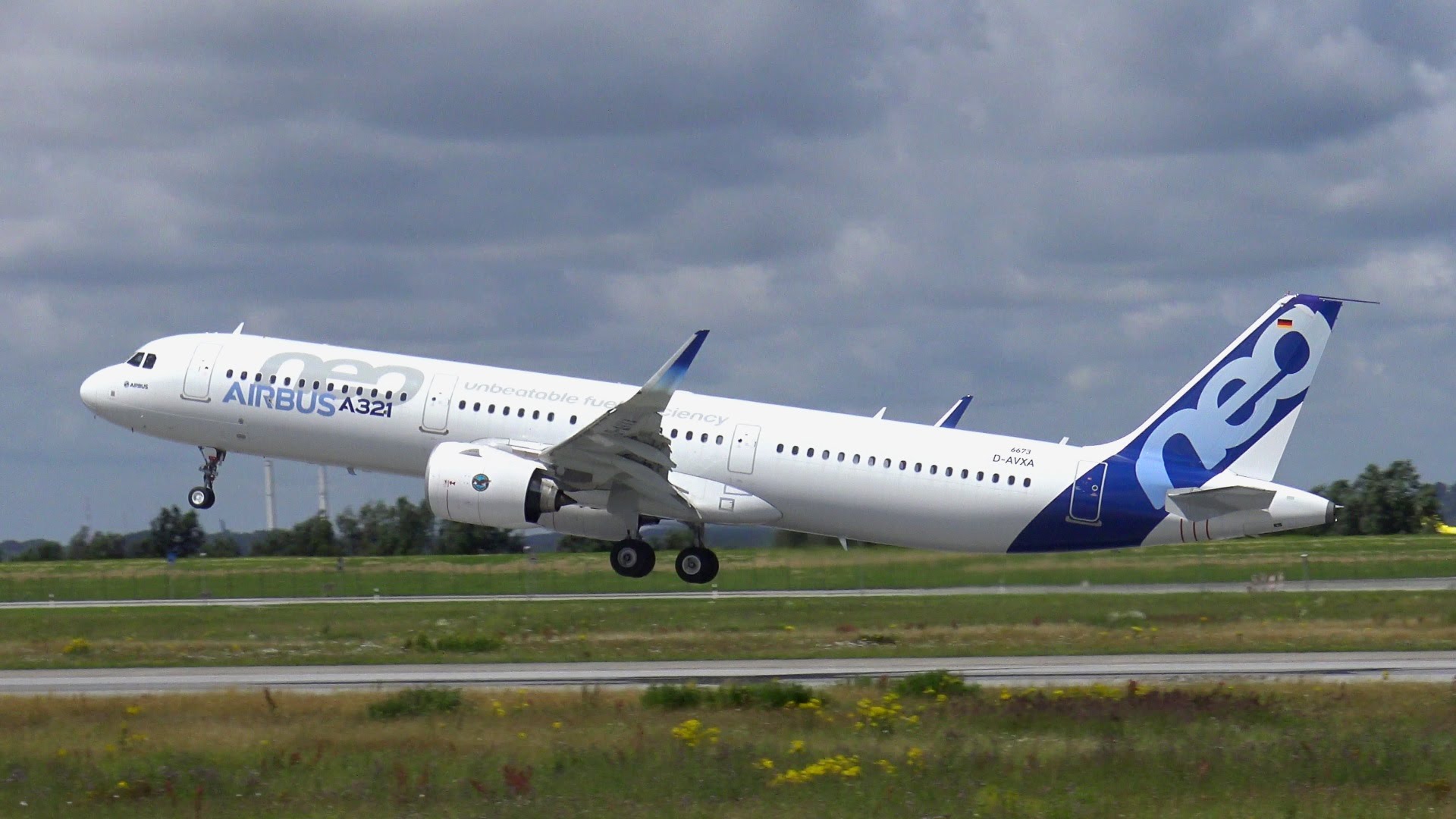Leeham News and Analysis
There's more to real news than a news release.
A350-1000 or 777-9? Part 3
Subscription required
By Bjorn Fehrm
April 25, 2024, © Leeham News: We are doing an article series comparing the capabilities of the Airbus A350-1000 and the Boeing 777-9. We looked at the development history of the aircraft and compared their size and payload capacity.
Now, we use our Aircraft Performance and Cost Model (APCM) to fly the aircraft on a typical route and compare their performance. We also look at their stage of development and the potential for future upgrades inherent in the design.
Summary:
- The A350-1000 has got its Maximum TakeOff Weight (MTOW) increased four times since entry into service.
- The latest MTOW hike to 322t gives the A350 a clear payload-range advantage over the 777-9. Any increase in the 777-9’s MTOW will have to come after type certification.
Better transparency needed on Boeing’s 1Q earnings call
Subscription Required
By Scott Hamilton
Analysis
 April 22, 2024, © Leeham News: Boeing reports its first quarter financing results on Wednesday. It’s not going to be pretty.
April 22, 2024, © Leeham News: Boeing reports its first quarter financing results on Wednesday. It’s not going to be pretty.
But how “transparent” will CEO David Calhoun and CFO Brian West be?
These days, “transparency” seems to be Boeing’s buzzword. It used to be “safety is our number one priority.” As we’ve seen about safety since the 2018-2019 737 MAX crisis, “safety” seemed more rhetorical than the Number One priority. “Safety” came under question again following the Jan. 5 accident involving Alaska Airlines Flight 1282. That’s the flight in which an emergency exit door plug blew off the airplane at 16,000 ft. Luckily, nobody was sucked out of the airplane. There were minor injuries and damage throughout the cabin. The plane was a 10-week-old 737 MAX 9. A new crisis was underway.
The National Transportation Safety Board (NTSB) quickly determined that four bolts that hold the door plug on 12 brackets were missing after what Calhoun euphemistically called a “quality escape” weren’t reinstalled during the final assembly of the accident airplane.
Subsequent information, including a special six-week audit by the Federal Aviation Administration (FAA) and a year-long study that was released within a month of the Alaska accident concluded Boeing failed to meet dozens of safety standards. Even safety procedures announced by Boeing after the first MAX crisis were not being met.
Calhoun and others within Boeing vowed transparency. However, the expert panel that conducted the year-long study noted their work was inhibited by non-disclosure agreements limiting access to documents. They also noted that some Boeing employees met with company lawyers before being interviewed.
Transparency over latest charges
Boeing last week made two engineers available in a special media conference to refute charges by a whistleblower that safety failures continue to occur in the final assembly of the 777 and 787. The technical presentation was detailed and thorough. Assuming the information was not cherry-picked, Boeing painted a picture that the complaints were either unfounded or that Boeing had corrected many of the issues already. The in-service 777 and 787 fleets are safe, they said.
LNA’s Bjorn Fehrm, an aerospace engineer who remains active in this capacity in our consulting business, reviewed the Boeing presentation and our raw transcripts. He backs the safety of the airplanes.
There has been a “growing trend of quality erosion,” wrote aerospace analyst Ron Epstein in an April 11 note, citing the 787 industrial debacle and its three-month grounding by the FAA in 2013. “A lack of oversight has plagued the MAX program since inception.”
But transparency issues don’t stop there. And here’s something for Calhoun and West to address on Wednesday (not that they will take our urging to heart).
Advertised production rates on the 737 and 787 lines are far higher than the data suggests. But Boeing has failed to be forthcoming about the true rates—and it hasn’t for months. Cash flow data may be affected by a recurring practice that some call an accounting trick to distort this picture.
Focus on quality not slowing innovation, says GKN
By Tom Batchelor
April 18, 2024, © Leeham News: The crisis at Boeing forced the entire supply chain to re-evaluate manufacturing processes and double down on quality control – but that is not yet stifling innovation, according to Peter Dilnot, CEO of Melrose PLC, the parent company of aerostructures and engine components supplier GKN Aerospace.
Melrose is most of the way through a comprehensive restructuring, and the company has emerged as a pure-play aerospace business that has consolidated production sites and exited “non-favorable” contracts.
“We don’t want to be everywhere,” explained Dilnot during a briefing in London attended by LNA this week, which was intended to set the scene ahead of July’s Farnborough Airshow.
“One of the reasons I think aerospace is so much in vogue at the moment is that it is one of the very few markets where you’ve got structural growth. Aerospace is unique in that we’ve got these long order backlogs, structural growth and as a result a growing top line for industry participants.”
From 50 production facilities pre-COVID, GKN is now down to 33, and it will soon be at 31 sites. Its four global technology centers remain in the UK, where it is headquartered, the US, the Netherlands, and Sweden.
The positioning of Melrose as a leaner business after the spin-off of its automotive unit is producing positive results. The company posted revenue of £3.35bn ($4.29bn) for 2023, 17% growth over the previous year, and adjusted operating profit of £420m (up from £186m in 2022), in its full-year results last month. Operating margin reached 12.5%, up from 6.3%, and profits of £700m are being targeted by 2025.
Read more
A350-1000 or 777-9? Part 2
Subscription required
By Bjorn Fehrm
April 10, 2024, © Leeham News: We are doing an article series comparing the capabilities of the Airbus A350-1000 and the Boeing 777-9. The A350-1000 has not been a hot seller, and a lot of analysts asked why. Is there a capability gap or what is the reason?
At the same time, the reworked Boeing 777X had reassuring initial sales at the November 2013 launch at the Dubai Air Show, where Emirates ordered 150 777-9 out of a total show orderbook of 259 aircraft for Emirates (150), Qatar (50), Lufthansa (34), and Ethiad (20). The orders have since grown to 481 as of late 2023.
The A350-1000 has had a recent resurgence in orders and switches from the A350-900 orders, whereas the 777–9 has seen several delays due to engine and certification problems and is now scheduled for 2025 delivery instead of 2020.
Does the 777-9 or the A350-1000 hold the upper hand in a long-term race between the largest widebodies after the Airbus A380 and Boeing 747-8i stopped deliveries? We use our Aircraft Performance and Cost model to compare the two to understand their present performance and potential for upgrades.
Summary:
- The Boeing 777-9 is a larger and heavier aircraft with a 12% higher passenger capacity.
- Does an advanced wing and later generation engines compensate for an older and heavier fuselage structure?
Airbus’ A350-1000 or Boeing’s 777-9?
Subscription required
By Bjorn Fehrm
April 4, 2024, © Leeham News: Korean Air confirmed an order for 33 Airbus A350 in the week, 27 of which are the larger A350-1000. The order is significant on two accounts:
First, 27 A350-1000 and only 6 A350-900, where analysts have for years asked why the -1000 isn’t selling.
Secondly, for a carrier that has a rather 50-50 fleet of Airbus and Boeing planes, its large widebody was the Boeing 777-300ER, whereof it has 27 out of 37 Boeing 777 in total. Korean Air now chooses the A350-1000 to replace the 777-300ER. Why not the 777-9?
Was this a question of availability (the 777-9 should have been delivered in 2020 but has had several delays; the present plan says 2025), or was there a technical-economic reason for Korean Air’s decision? We examine the characteristics of the two planes to find the answers.
Summary:
- The Boeing 777-300ER was an exceptionally successful stretch of the original 777-200. The 777-9 is the sequel to the 777-300ER.
- The market did not like the original A350-1000. Therefore, the present -1000 is a reconfigured aircraft compared to the original variant.
Boeing wrote off, took charges in excess of $70bn since McDonnell Douglas merger
Subscription Required
By Scott Hamilton
 April 1, 2024, © Leeham News: The Boeing Co. wrote off or took forward loss charges of more than $70bn since the 1997 merger with McDonnell Douglas Corp. (MDC). That’s when most legacy Boeing employees and many observers view the inflection point when Boeing became focused on shareholder value vs the engineering legacy that once defined the company.
April 1, 2024, © Leeham News: The Boeing Co. wrote off or took forward loss charges of more than $70bn since the 1997 merger with McDonnell Douglas Corp. (MDC). That’s when most legacy Boeing employees and many observers view the inflection point when Boeing became focused on shareholder value vs the engineering legacy that once defined the company.
LNA has tracked Boeing’s charges and write-offs for years. We’ve also tracked Airbus’ performance since 1999 financial reporting. From then through 2023, Airbus took charges and forward losses of more than €33bn. At today’s exchange rate, this is about $35bn. During the same period, Boeing’s figure was more than $70bn, twice that of Airbus.
From 1997 through 2019, when Boeing suspended stock buybacks due to the first 737 MAX crisis, Boeing spent more than $60bn in stock buybacks to boost shareholder value, according to an analysis for LNA.
For a company focused for decades on shareholder value, the write-offs and charges is a lot of money out the door.
A detailed analysis reveals a surprising detail. More than half of Boeing’s charges and write-offs come from Boeing Commercial Airplanes–$44.66bn. More than $22bn was incurred since 2020, when the MAX crisis and the COVID-19 pandemic were in full swing.
In the charts below, LNA breaks down the charges and write-offs under each chief executive officer beginning with Phil Condit, the CEO who engineered the merger with MDC. Unsurprisingly, most of the charges came under current CEO David Calhoun and his predecessor, Dennis Muilenburg because of the MAX and the pandemic. Fixed price defense contracts also were major contributors. The KC-46A refueling tanker and Air Force One lead the way.
When does a larger airliner pay off? Part 4
Subscription required
By Bjorn Fehrm
March 28, 2024, © Leeham News: We are doing an article series about what drove the cross-over from Airbus A319 to A320 and then to A321. We analyzed the change from A319/A320ceo to neo last week and discussed why the neo shift for the A319 meant if stopped selling.
Now, we study the change from A321ceo to A321neo and what caused the acceleration of growth of A321 sales and deliveries as it was upgraded to neo.
Summary:
- The increase in sales and delivery of the A321 when it went from ceo to neo has less to do with improved operating economics than other factors.
- One of these factors was it filled the MOM (Middle Of the Market) gap that Boeing identified 10 years ago.
Exclusive: IAM to seek Boeing Board seat
Subscription Required
By Scott Hamilton
Analysis

Jon Holden, president of the IAM 751 union that assembles Boeing’s airplanes in the greater Seattle area. Credit: IAM 751.
March 25, 2024, © Leeham News: Boeing’s largest union, the IAM 751, will seek a seat on the Board of Directors in its contract negotiations that began on March 8.
The union assembles Boeing’s airplanes in the Renton and Everett (WA) factories.
LNA wrote in January 2020, when David Calhoun became CEO of The Boeing Co., that labor representation was needed on a Board of Directors that was filled with politicians, defense and finance people—but none versed in safety or even commercial aviation production. Commercial aviation was Boeing’s largest profit center for decades before the 2018-19 737 MAX crisis began.
The day Calhoun assumed his position on Jan. 13, 2020, LNA published a list of things facing the new CEO. Among them was a need to reconstitute the Board. Included in this was a suggestion that members from the IAM and Boeing’s engineering and technician union, SPEEA, be appointed (among other specific ideas).
About half the Board has changed since then, resolving some but not all of the issues raised—but neither the IAM nor SPEEA have representation on the Board.
Related Articles
- Boeing Board needs a major shake up (Jan. 13, 2020)
- Culture change needed at Boeing; labor talks could lead the way (Jan. 29, 2024)
- Boeing labor contract is opportunity for overdue culture change (Seattle Times, March 15, 2024)
On Jan. 29 of this year, LNA opined that the forthcoming labor contract negotiations with the IAM 751 was a good opportunity to begin changing the culture at Boeing. The following March 15, The Seattle Times editorialized the same theme (also citing our report in the process).
The administrator of the Federal Aviation Administration, Mike Whitaker, slammed Boeing’s culture in a March 19 interview with NBC Nightly News.
“There are issues around the safety culture in Boeing. Their priorities have been on production and not on safety and quality. So, what we really are focused on now is shifting that focus from production to safety and quality,” Whitaker told news anchor Lester Holt.










